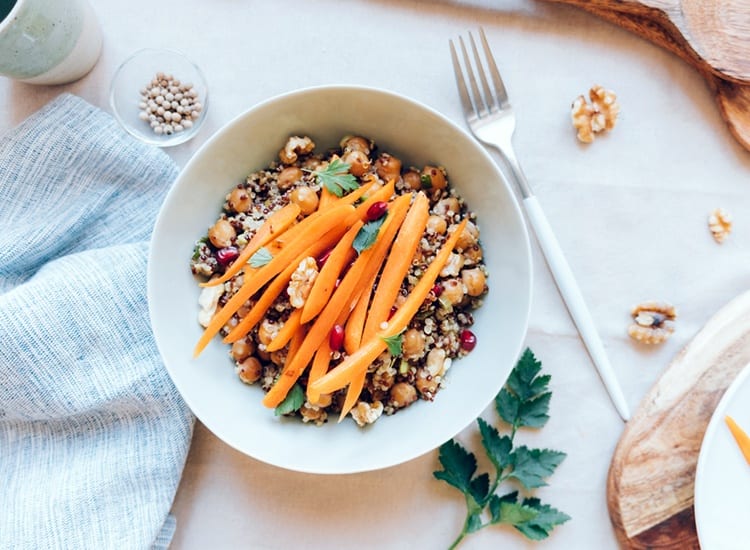Clean 21: 21 Day Detox
Our Signature 21-Day Full-Body Reset
Questions? Ask about this product
Free Shipping On Orders Over $50
Complementary products


Let’s talk about portions. We get tons of questions about portion sizes, especially when it comes to weight loss goals or eating on the 21-Day Program. Here at Clean, we don’t really focus on counting calories. All calories are not created equal. So what should we be considering when we talk about portion sizes?
The calories in a doughnut affect our bodies very differently than the calories in broccoli. A doughnut is going to spike blood sugar levels, set off insulin production, send hormones awry and leave us crashing low, needing more food soon after. It starts a vicious circle of eating too much and reaching for “quick energy” foods, like sugars and carbs. Broccoli is going to supply our bodies with healthy fiber and vitamins, having a very low impact on blood sugar while supplying us with even energy and satiation.
How much we eat comes down is totally individual. We are all our own unique individuals with different needs. We have different activity levels, metabolism speeds, preferences, genes, sleeping habits and eating habits. If your job requires you to run around all day, chances are you will need to eat more than someone your same age that sits at a desk all day. Makes sense, right? It’s important to take these things into account when determining portion sizes.
It really all comes down to listening to your body. Don’t starve and don’t stuff. It’s not productive to spend a lot of your day hungry, and that can cause your metabolism to stall out. If this is the case, chances are you need a bit more fiber, fat or protein. At the same time, you don’t want to eat until you are 110% full, which a lot of us can easily do (especially with modern-day portion sizes).
Here are some general guidelines to give us a good reference point when it comes to determining how much to eat at a meal.
These are pretty much free rein. Vegetables are extremely low-calorie, loaded with goodness (fiber, phytonutrients, vitamins, etc), and will help fill you up. The biggest tip is to make vegetables the star on your plate. If you do simply this, you can dramatically change your health for the better. Rethink veggies as sides, and make them the main. Remember to include those leafy greens too, as many as you can!
Meat = About the size of the palm of your hand or 3 to 5 oz.
Beans/Legumes = The size of a closed fist or approximately ½ cup.
Grains or starchy carbohydrates = The size of a cupped hand or ¾ cup – 1 cup.
Fresh fruits = The size of a closed fist or about ½ cup – 1 cup. Some fruits come in pre-portioned sizes, like apples and bananas (small to medium bananas).
Oils = A thumb-sized amount or 1 Tablespoon.
Nuts/Seeds/Coconut = 10-12 nuts or about ¼ cup.
Nut butter/Tahini = About 1-2 Tablespoons.
Avocado = One half of a medium-sized avocado.
These are simply general guidelines – your individual needs may differ. That’s ok! Above all you are the expert on you. Check out our recipes for buddha bowl, meal prep, and macro bowls for more ideas on portioned and balanced eating.
Written by Hannah Aylward
If you enjoyed this article, you might also like What Are Healthy Fats and Why Should I Eat Them?